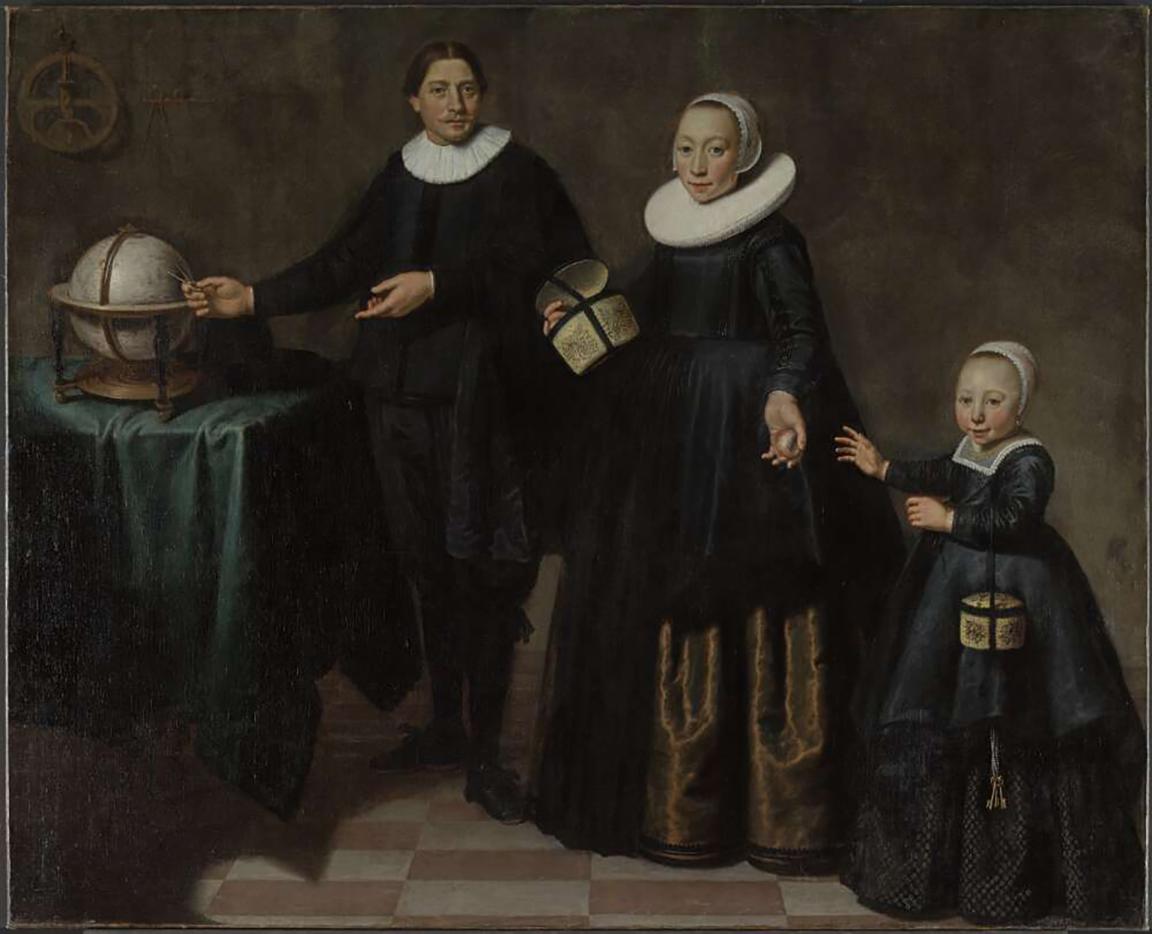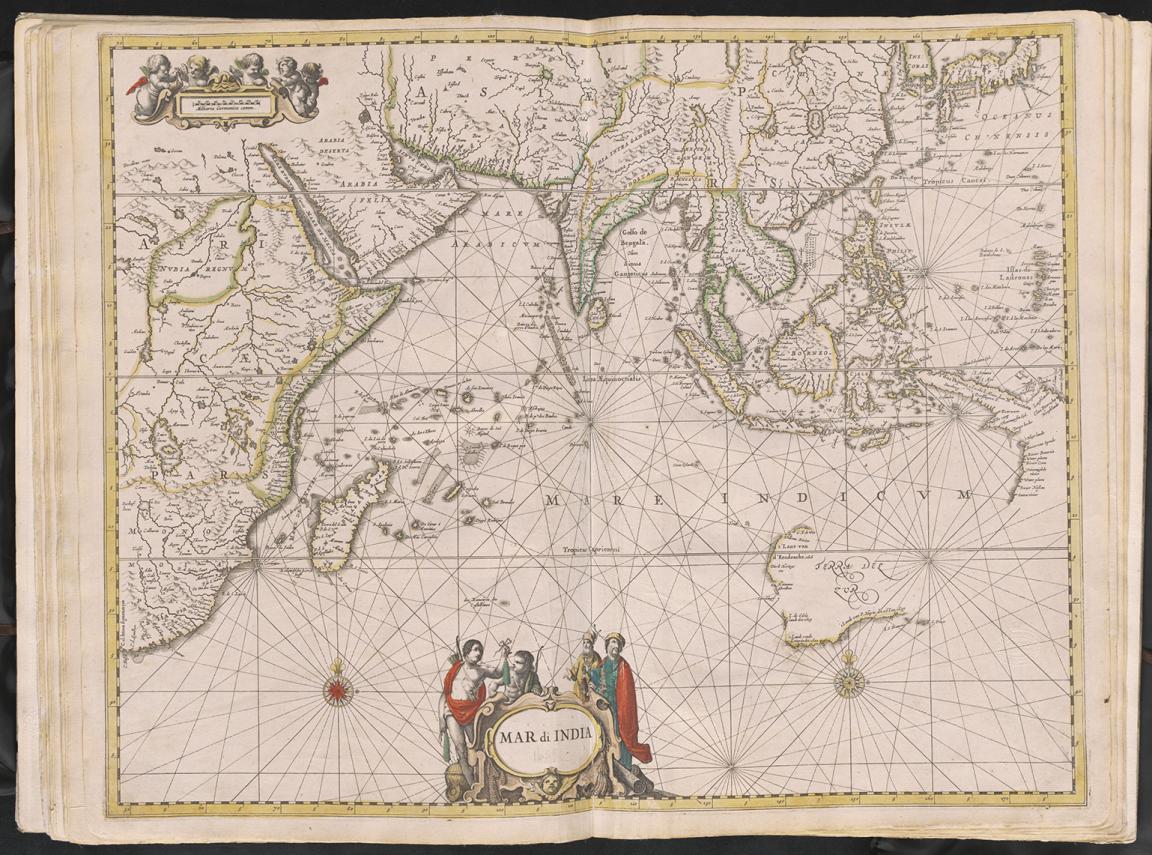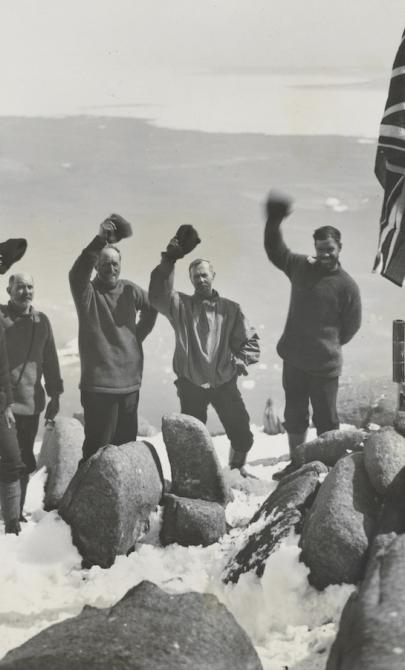Early explorers
The story behind Abel Tasman’s portrait
This seventeenth-century portrait shows Dutch explorer Abel Tasman (1603–1659) with his family. Painted around 1637 by Jacob Gerritsz Cuyp, it captures Tasman with his second wife and his daughter from his first marriage. Tasman, known for his voyages with the Dutch East India Company, is most remembered as the first European to see Tasmania in 1642, an island later named after him.

Jacob Gerritsz Cuyp, Portrait of Abel Tasman, his wife and daughter, 1637, nla.gov.au/nla.obj-138417248
Jacob Gerritsz Cuyp, Portrait of Abel Tasman, his wife and daughter, 1637, nla.gov.au/nla.obj-138417248
The arrangement of the three figures is symbolic. As Tasman motions towards a globe, as if introducing his sailing skills to the viewer, his wife passes an apple to her stepdaughter, representing the transmission of knowledge from an older to a younger generation.
Activity 1: Uncover the meaning in the portrait
Step 1: Explore the details
Display the portrait and discuss it with your students. Use these guiding questions to dive deeper:
- What do you think the relationship is between the people in the painting?
- When do you think this picture was painted?
- Why might the man be pointing to a globe?
- What could be the significance of the apple being passed between the woman and the child?
- What might the tools on the wall represent?
Step 2: Reveal the story
After discussing these questions, introduce the students to the title of the painting and share more information about Abel Tasman. Can your students guess which Australian state is named after this famous explorer?
Step 3: Create a symbolic portrait
Encourage students to create their own self-portraits using any art medium. Ask them to think about how objects in the painting reveal something about Tasman. What items would they choose to include in their portrait to represent themselves?
Digital Classroom: Early explorers
Explore Tasman’s world with maps

Jan Jansson & Hendrick Doncker, Mar di India, 1659, nla.gov.au/nla.obj-230757141
Jan Jansson & Hendrick Doncker, Mar di India, 1659, nla.gov.au/nla.obj-230757141
The map is part of Doncker’s The Sea Atlas (1659), which was an essential tool for sailors during the Dutch "golden age" of mapmaking. These maps often included guesses about unexplored areas - sometimes wrong, but often surprisingly accurate. On this particular map, the west coast of Australia is sketched, reflecting the early Dutch encounters with this mysterious land.
Activity 2: Exploring historical maps
Step 1: Examine the map
Share the historical map with your students. It was created around the same time the portrait of Abel Tasman was painted and he was undertaking his explorations. Ask your students to use the map to explain:
- What does this map reveal about the understanding of the world in Tasman’s time?
- How does the map differ from a contemporary map of Australia and its surroundings?
Step 2: Map design challenge
Invite students to explore the design features of the historical map (for example: labels, illustrations, navigation lines). Challenge them to create their own map of Australia in a similar style.



